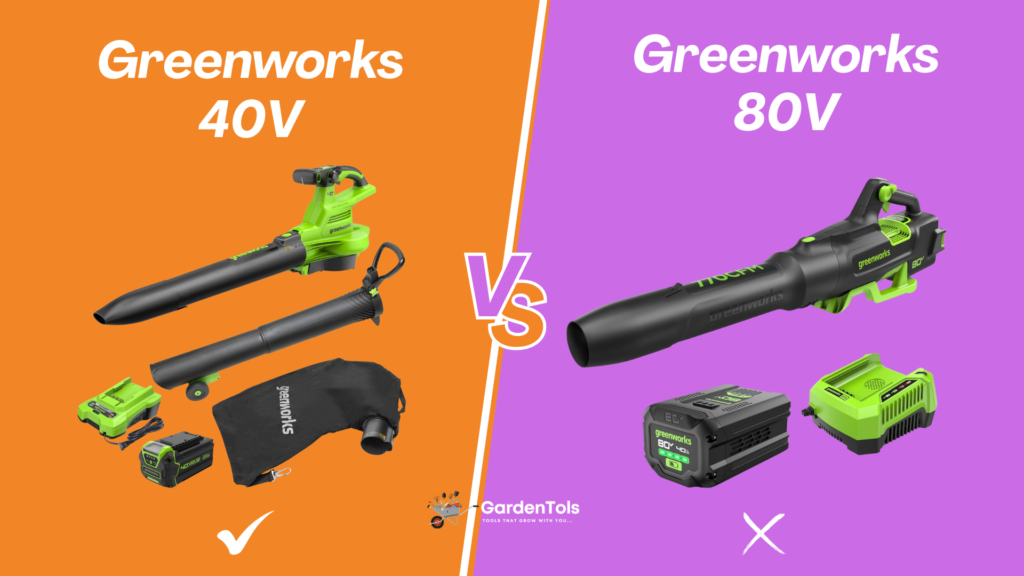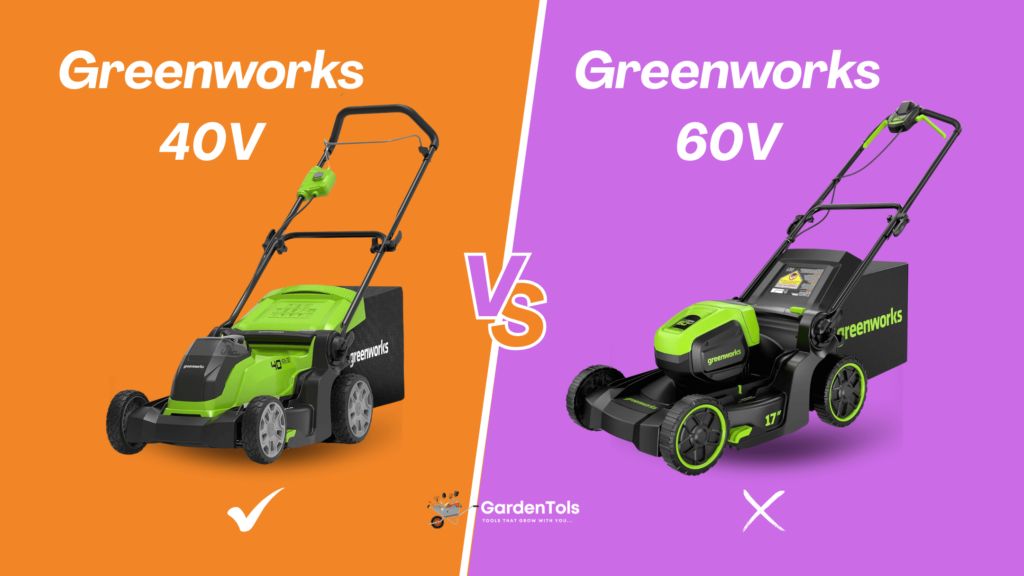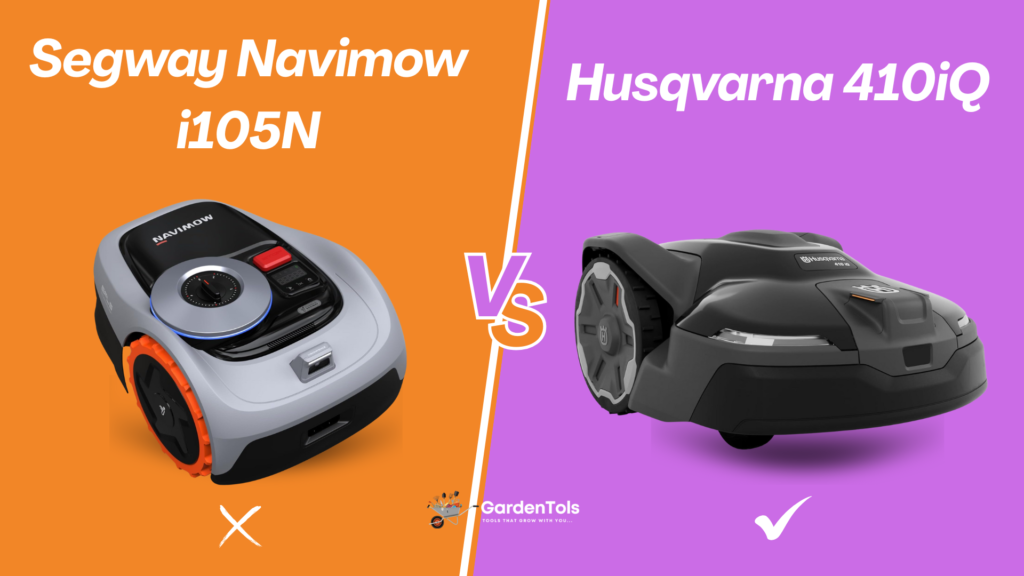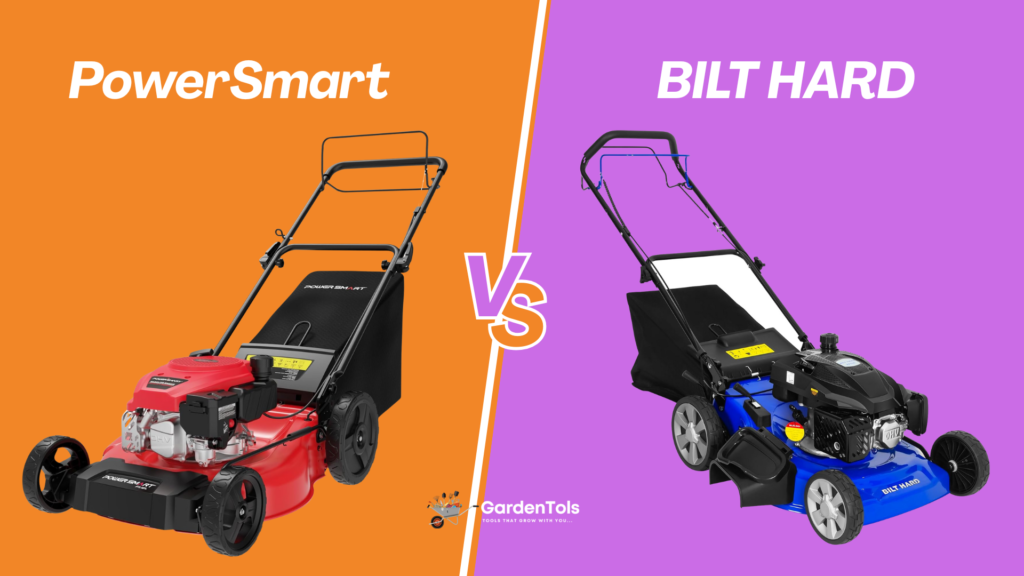Cordless blowers are becoming the go-to for homeowners who want convenience without sacrificing performance. In this Greenworks 40V vs 80V leaf blower comparison, we break down airflow, runtime, usability, and overall value. Insights from the Greenworks 40V leaf blower review and Greenworks 80V leaf blower review will help you choose the right tool for your yard.
What is the difference between Greenworks 80V and 40V blower?
The Greenworks 40V leaf blower delivers up to 550 CFM and 130 MPH, making it an excellent fit for small to medium yards. It is lightweight, easy to maneuver, and handles dry leaves and light debris effectively.
The Greenworks 80V blower steps things up with 800 CFM and 200 MPH, tackling wet leaves, pine needles, and even light snow. Turbo mode can reach 16.1 Newtons of blowing force, giving it professional-grade power.
How do battery life and usability compare?
The 40V model offers about 15–30 minutes of runtime, depending on the power setting. At under 8 lbs with the battery, it’s highly maneuverable and comfortable for longer sessions.
The 80V blower runs for 15–20 minutes on high/turbo and up to an hour on low. While it weighs closer to 10 lbs, the extra power compensates, especially for demanding yard work.
Which blower is better for different yard sizes?
The Greenworks 40V is best suited for smaller yards or lighter cleanup tasks like patios, driveways, and dry leaves. It’s quiet and compact, making it beginner-friendly.
The Greenworks 80V is the clear choice for larger properties, heavy wet leaves, or mixed debris. Its airflow and speed cut through tougher jobs quickly, making it the better performer for big tasks.
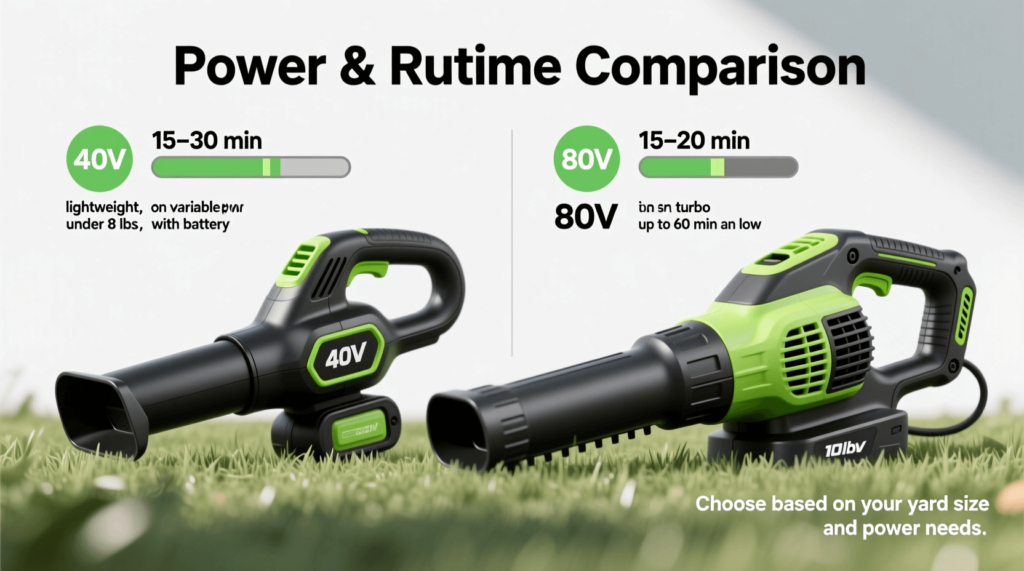
What are the main differences in features?
Greenworks 40V Leaf Blower Review
Compact, quiet, and lightweight
Good for routine cleanups
Easier on the budget
Greenworks 80V Leaf Blower Review
Turbo mode with superior blowing force
Handles heavy-duty tasks and wet debris
Brushless motor for longer life
Both are cordless, eco-friendly, and require low maintenance. However, the 80V includes higher airflow and extended durability for tougher work.
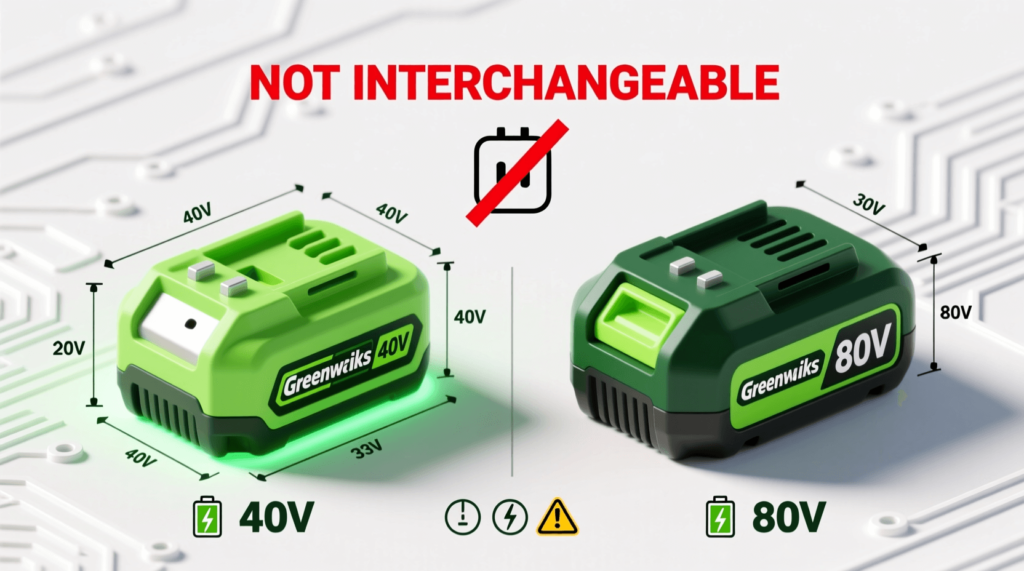
Are Greenworks 40V and 80V batteries interchangeable?
No, Greenworks 40V and 80V tools use separate battery systems, so the batteries are not interchangeable. If you already own multiple 40V tools, sticking with that platform may be more convenient. For maximum power, the 80V line is better for expanding into larger yard tools.
Greenworks 40V vs 80V Leaf Blower Specs
Here’s a side-by-side breakdown of the Greenworks 40V vs 80V blower specs:
| Feature | Greenworks 40V Leaf Blower | Greenworks 80V Leaf Blower |
|---|---|---|
| Max CFM | 550 | 800 |
| Max Air Speed (MPH) | 130 | 200 |
| Blowing Force | Moderate – suitable for dry leaves | Up to 16.1 Newtons – strong for wet, heavy debris |
| Runtime (High) | 15–30 minutes | 15–20 minutes (up to 1 hour on low) |
| Weight | ≈ 8 lbs with battery | ≈ 10 lbs with battery |
| Noise Level | ≈ 78 dB – quieter, low vibration | Slightly louder, mild vibration |
| Best Use | Light to medium debris, smaller yards | Medium to heavy debris, large yards |
| Check Price on Amazon | Check Price on Amazon | Check Price on Amazon |
Which Greenworks blower is the better value?
The Greenworks 40V blower is ideal if you want an affordable, lightweight tool for routine yard cleaning. It’s reliable for smaller jobs and less physically demanding.
The Greenworks 80V blower is the better long-term investment for homeowners with larger properties or heavier debris, offering unmatched airflow and speed.
Selected Choice: The Greenworks 80V leaf blower delivers the best mix of power, efficiency, and durability. While heavier, it makes quick work of large-scale cleanup and is the top performer in this comparison.
Which model performs better for heavy wet leaves?
The Greenworks 80V blower clearly outperforms the 40V when dealing with heavy wet leaves, pine needles, or compacted debris. Its 800 CFM airflow and 200 MPH airspeed, combined with up to 16.1 Newtons of blowing force, give it the strength needed to move stubborn, waterlogged piles that the 40V struggles with.
Compare runtime and battery options for 40V vs 80V
The 40V blower typically offers 15–30 minutes of runtime, depending on power level, and benefits from widely available 40V spare batteries, making it convenient for users already in the 40V ecosystem. The 80V blower provides 15–20 minutes on high/turbo or nearly an hour on low, but its larger batteries are heavier and more expensive, though fewer are needed for demanding work.
How does blowing force (N) and CFM differ between them?
The 40V blower produces up to 550 CFM and around 130 MPH airspeed, translating to moderate blowing force ideal for light to medium tasks. In contrast, the 80V blower pushes up to 800 CFM, 200 MPH, and as much as 16.1 Newtons of force, giving it far greater capacity to handle large debris fields efficiently.
Which is quieter and what are the vibration differences?
Noise levels are modest for both models compared to gas blowers, but the 40V is slightly quieter, averaging around 78 dB, and its lighter design reduces strain over long use. The 80V model generates more noise and mild vibration due to its higher airflow, but most users find it comfortable thanks to ergonomic design.
Best batteries and spare packs to maximize runtime
For the 40V blower, a 4.0Ah or higher-capacity battery is recommended to extend runtime beyond 30 minutes, and having a second pack ensures uninterrupted work. For the 80V blower, a 2.5Ah or 4.0Ah battery offers a good balance of runtime and weight, with spare packs providing the endurance needed for large property cleanups.

